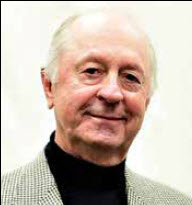 By: Jerry R. Barksdale
By: Jerry R. Barksdale
February, 1968. Somewhere over the South China Sea, Major Clarence R. Little, age 36, closed his eyes, listened to the drone of the engines and thought about what lay ahead of him. He was headed to harm’s way, that much he knew. Politicians in Washington called it “Vietnam Conflict.” The 58,318 whose names would eventually be chiseled in black granite would have told them it was a war – and a hellish one at that! It was in its 9th year. Little would soon experience it firsthand.
The flight was long and tiring, giving Major Little much time to think – maybe too much. And his head was full of thoughts. A soldier returned from Nam one of three ways: happy and whole after a year of service, wounded, or inside a body bag. Over 16,000 Americans had been killed to date. By year’s end 30,000 would be dead. In January, the TET Offensive had been launched and the U.S. Embassy in Saigon attacked. And, yes, he thought about his sweet wife, Diane, and their two boys, Douglas, age 10, and Jeffery, age 8, back in Sunnyvale, California. He had met pretty blue-eyed, Diane Elizabeth Kilsey the first day of school in the 8th grade at Corfu, a small village in upstate New York. “Someday, I’m going to marry you,” he told her. She wasn’t so sure. Both graduated from Pembroke during the Korean War. Little couldn’t get a job so he joined the Army. His father, a tool and die maker, was asleep on the couch when he walked in and proudly announced his enlistment. His father jumped up. “Good God Almighty! They are using live bullets over there!”
After serving two years, Little went to work for Chevrolet, earned an engineering degree, and re-enlisted in the Army as a 2nd Lieutenant. In 1954, he fulfilled his promise – he married Diane. He had recently spent 6 months at Ft. Bliss, Texas, learning to speak Vietnamese. His orders were specific. He would be a military advisor to South Vietnam forces fighting Viet Cong – called VC for short. The blue South China Sea eventually gave way to land, rice paddies, and deep green – Vietnam. His plane bumped down the runway at Tan Son Nhut Air Base outside Saigon. Little had arrived.
Little reported for duty and was ordered to the Mekong Delta, a vast wetland no more than 10 feet above sea level, and longtime base for Viet Cong. A buddy had previously told him not to take Cang Long district.
“Why not?”
His buddy explained, “It’s well known that no advisor has ever lived to rotate off that team.”
Little reported at Cang Long and asked the Colonel, “Is this the place I heard that no Americans ever rotated alive?” It was. “It seems to me you need an infantry man instead of an engineer,” said Little.
“No, your background is mines and booby traps. That’s why I want you here.”
Little’s team consisted of 8 Americans, living in a rural village, also named Cang Long, working alongside South Vietnamese soldiers. One mile south of Cang Long, the team was constructing a school for children. Winning the hearts and minds of locals was America’s best weapon against the Communist. The South Vietnamese captain didn’t want to send out combat patrols and engage the VC. Little thought otherwise. “We need to go on operations and chase the VC, so they won’t have time to attack us,” he advised. And he laid down a firm rule: Never-never establish a pattern. Do something three times, then change. The deputy commander was former VC. After the VC had entered his village, killed his wife and children and was about to kill him, he joined them. Later, he switched allegiance to the South Vietnamese. “He was a good man,” says Little. “And wanted to go on combat operations. We caught two VC in the tree line and got a lot of information from them.” Thereafter, the captain took the patrol out. “Shotgun” was an Air Force pilot assigned to Little’s higher headquarters and coordinated when they needed support on the ground. “I’d ask for a flyover and he would always tell me, ‘I can’t do that.’ About 10 minutes later, a jet would come over at rooftop level, turn, and go straight up and blow the roof off a couple of buildings. It put the scare on the VC.”
It was a midnight when Little heard “thunk-thunk-thunk.” Incoming mortar rounds! Little guessed the VC was hitting nearby headquarters. He radioed. “You getting hit?” he asked. Negative. It was the hamlet between them, Little concluded. He hurried over to the aid station and told the men to put on helmets and flak jackets. “I think we’re going to get hit,” he told them. Little scouted near the head of a nearby canal, walking between a Jeep and statue of Mary and baby Jesus. A mortar round hit, demolishing the statue and Jeep. He ran to the team house and got his flak jacket. A medic ran in and exclaimed, “I just saw the major get blown up!” Sgt. Custer, the radio operator replied, “He couldn’t, he just dove in the bunker.” Little was lucky. “God was with me,” he says. “I didn’t get a scratch.”
Little radioed headquarters and requested an L-19 spotter plane to locate the mortar fire. Negative. The General wanted to keep the plane for himself in case they got hit. Five minutes later, the radio crackled. “Three-five-six, this is Spooky.” Spooky was a C-130 aircraft armed with multiple guns on the side that looked like a hose of fire when it fired.
“This is three-five-six. Come in,” replied Little. “We’re in your area,” said Spooky. “Understand you need a little help down there.”
“Roger that,” said Little.
“Got a friend of yours on board. Can’t tell you his name,” said Spooky. “But he owes you a case of beer.”
“Yep, I know who he is,” said Little. “The VC are on the other side of the canal. Hose’em down.” And Spooky did, belching out a stream of deadly fire.
Little knew the man that owed him a case of beer. It was Col. Rausch. Earlier, Raush’s personnel carrier team came through Cang Long Village. “They had been out in the boonies three weeks and were tired, dirty, and thirsty,” says Little. We gave them all the beer we had, fed them, gave them showers. We took care of them.”
The attack ended – everything was calm for a while.
Little lay down on his bunk. “Thunk-thunk-thunk. Mortar fire! The team jumped into the bunker. The first three rounds hit the team house and shredded the room where the NCOs slept. “This was the VC’s way of telling us we didn’t get them,” says Little. They often left their calling card. “Once a sniper shot a hole in our roof. Sgt. Custer spent 3 days repairing it with new tile – did a beautiful job. As soon as he climbed down the ladder and was admiring it, the sniper took it out.” Little is convinced it was the same sniper that shot him in the side while he was inspecting a mortar emplacement. “It was during the TET Offensive, and the VC said they were going to kill an American,” says Little. “I didn’t tell anyone because I didn’t want the sniper to know he got me.” Headquarters was buzzing about it. Little decided he should file a report. His boss concluded it was a violation of regulation for not reporting and asked the general what to do. “Give him a medal,” the General replied.
The school in the nearby village was finally completed. The Vietnamese captain told Little to take a couple of his team members to the opening. Little headed down the road in a Jeep. An old man ran out of his hooch and into the middle of the road waving his arms. “No go! You no go.” Four women appeared with hoes and dug up a 40 pound land mine and set it aside. “Now, you go,” said the old man. “That’s why we needed the support of the people,” says Little. Building the school probably saved Little’s life.
By: Jerry Barksdale
jerrybarksdale.net





